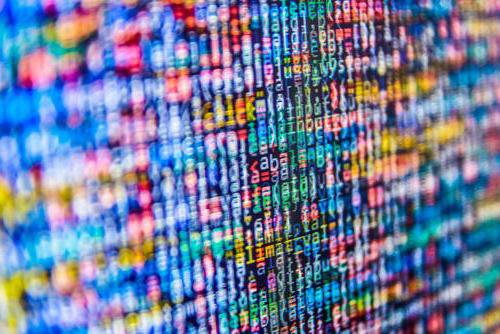Reliability - this is what shows the quality of information, reflects its completeness and accuracy. It has such signs as legibility of written and spoken language, the absence of false or in any way distorted information, a small possibility of erroneous use of information units, including letters, symbols, bits, numbers. The accuracy of the information and its source are also evaluated directly on a scale (for example, “predominantly reliable”, “reliable in full”, “relatively reliable”, and then to “completely unreliable” or “status not defined”).
What does this mean?
Reliability characterizes the undistortedness of information. It is influenced not only by the authenticity of the information, but also by the adequacy of the ways in which it was obtained.
Inaccuracy, however, may mean intentionally preparing data as false. There are cases when inaccurate information as a result provides information characterized by reliability. This happens when, at the time of their receipt, the degree of uncertainty of the information is already known to the addressee. In general, the following pattern is observed: the higher the amount of source data, the higher the reliability of the information becomes.
Adequacy of Information
Thus, reliability is directly related to the adequacy of information, its completeness and objectivity. This property is of very serious importance, mainly in the case of applying data to make any decisions. Information, which is not reliable, leads to such decisions that will have negative consequences in terms of social arrangement, political situation or economic situation.
So, we consider in more detail the concept of reliability of information.
Definition of concepts of reliable and false information

So, information is false if it does not correspond to the real state of things, it contains such data on phenomena, processes or events that, in principle, never existed or existed, but information about them differs from what is actually happening, is distorted or characterized by incompleteness.
Reliable can be called such information, which causes absolutely no doubt, is real, genuine. It includes such information, which, if necessary, can be confirmed by procedures that are legally correct, when various documents or expert opinions are used, witnesses can be invited, etc. In addition, the data can be considered reliable if they necessarily refer to primary source. However, in this case, the problem of determining the reliability of the source of information arises.

Types of information sources
Sources of information may be:
- individuals who, due to their authority or position, have access to such information that interests various kinds of media;
- various documents;
- the real environment (for example, urban, subject matter, which is the human habitat, natural);
- virtual environment;
- print media that have imprints, i.e. textbooks, books, encyclopedias or magazine articles;
- Internet sites, portals, pages on which the media can also be based.
Undoubtedly, one of the most authoritative and safest sources is documents, but they are considered to be such only when there is the possibility of legal verification. They are characterized by the entirety of the information.
Competent and incompetent
In addition to subdividing into reliable and unreliable, sources can also be competent and incompetent.
The most widely represented sources of information are those authorized by official authorities. First of all, state institutions should provide citizens with the most objective and accurate information. However, even the information of the press service of the government can be falsified, and there is no guarantee that information that is not reliable cannot be leaked from a state source. That is why receiving information does not mean trusting it unconditionally.
Source Link
Thus, the reliability of the information can be determined by the reference to the source present in it. If the latter has authority in any field or specializes in a certain field, then he is competent.
But the presence of a link does not always have to be mandatory, as it happens that various kinds of provisions are confirmed directly in the process of presenting information. This happens when the author of the information is a specialist, that is, a person is sufficiently competent in the area in which he is concerned. In this case, most often there is no doubt that the information will be reliable.
The vast majority of unnamed sources contribute to a decrease in the reliability of the material, especially when the article contains negative news about which the reader was not previously aware. People are mainly interested in the primary source of such information.
The best information is those that refer to sources with a certain authority, for example, having official status, various statistical agencies, research institutes, etc.
Then it is easier to verify the accuracy of the information.
Verification Methods
Since only information that is relevant to reality is reliable, the skill of checking the data and determining the degree of their reliability is very important. If you master this skill, you can avoid all kinds of misinformation traps. To do this, first of all, it is necessary to identify what semantic load the received information has: factor or estimated.
Monitoring the accuracy of information is extremely important. Facts are what a person encounters in the first place when he receives any information new to him. They refer to information already verified for reliability. If the information has not been verified or it is impossible to do, then it does not contain facts. These include numbers, events, names, dates. Also a fact is that you can measure, confirm, touch or list. Most often, sociological and research institutes, agencies specializing in statistics, etc. have the opportunity to present them. The main sign that distinguishes between the fact and the assessment of the reliability of information is the objectivity of the first. Evaluation is always a reflection of one's subjective gaze or emotional attitude, and also calls for certain actions.
Differentiation of sources of information and their comparison
In addition, it is important when obtaining information to distinguish between its sources. Since the overwhelming majority of facts is unlikely to be independently verified, the reliability of the data obtained is considered from the standpoint of trust in the sources that provided them. How to check the information source? The main factor determining the truth is considered practice, or what acts as an assistant in the performance of a specific task.The dominant criterion of any information is also its effectiveness, which is shown by the number of subjects who applied this information. The higher it is, the more confidence they will have in the data received, and their reliability is higher. This is the basic principle of the reliability of information.
Source Comparison
In addition, it will be quite useful to compare sources among themselves, since qualities such as credibility and popularity do not yet provide full guarantees of reliability. That is why the next important sign of information is its consistency. Each fact received from the source must be proved by the results of independent studies, that is, it must be repeated. If a reanalysis comes to the same conclusions, then it is established that the information is indeed consistent. This suggests that the information of a single character, random, does not deserve much confidence in itself.
Confidence level
The following proportion is observed: the greater the amount of such information derived from various sources, the higher their degree of reliability of the information. Each source is responsible for the facts provided, not only in terms of morality, but also in terms of materiality. If any organization provides data of doubtful origin, then it can easily lose its reputation, and sometimes even the means to ensure its existence. In addition, you can not only lose the recipients of information, but even be punished by a fine or imprisonment. That is why reputable sources with certain authority will in no way risk their own reputation by publishing false information.
What to do if a specific individual becomes a source of information?

There are situations when the source of information is not an organization, but a certain person. In these cases, it is necessary to find out as much information as possible about this author in order to determine the degree to which the information received from him should be trusted. You can verify the reliability of the data by familiarizing yourself with other works of the author, with his sources (if any), or by finding out whether he has speech freedom, that is, whether he can provide such information.
This criterion is determined by the presence of his academic degree or due experience in a certain field, as well as the position he occupies. Otherwise, the information may well be useless and even harmful. If you cannot verify in any way the reliability of the information, they can immediately be considered meaningless. When searching for information, first of all, it is necessary to clearly articulate the problem that needs to be resolved, which will reduce the possibility of misinformation.
If the information is anonymous, then in no case can you guarantee the accuracy of the information. Any information should have its own author and be supported by his reputation. In principle, the most valuable data are those whose source is an experienced person, not a random one.
